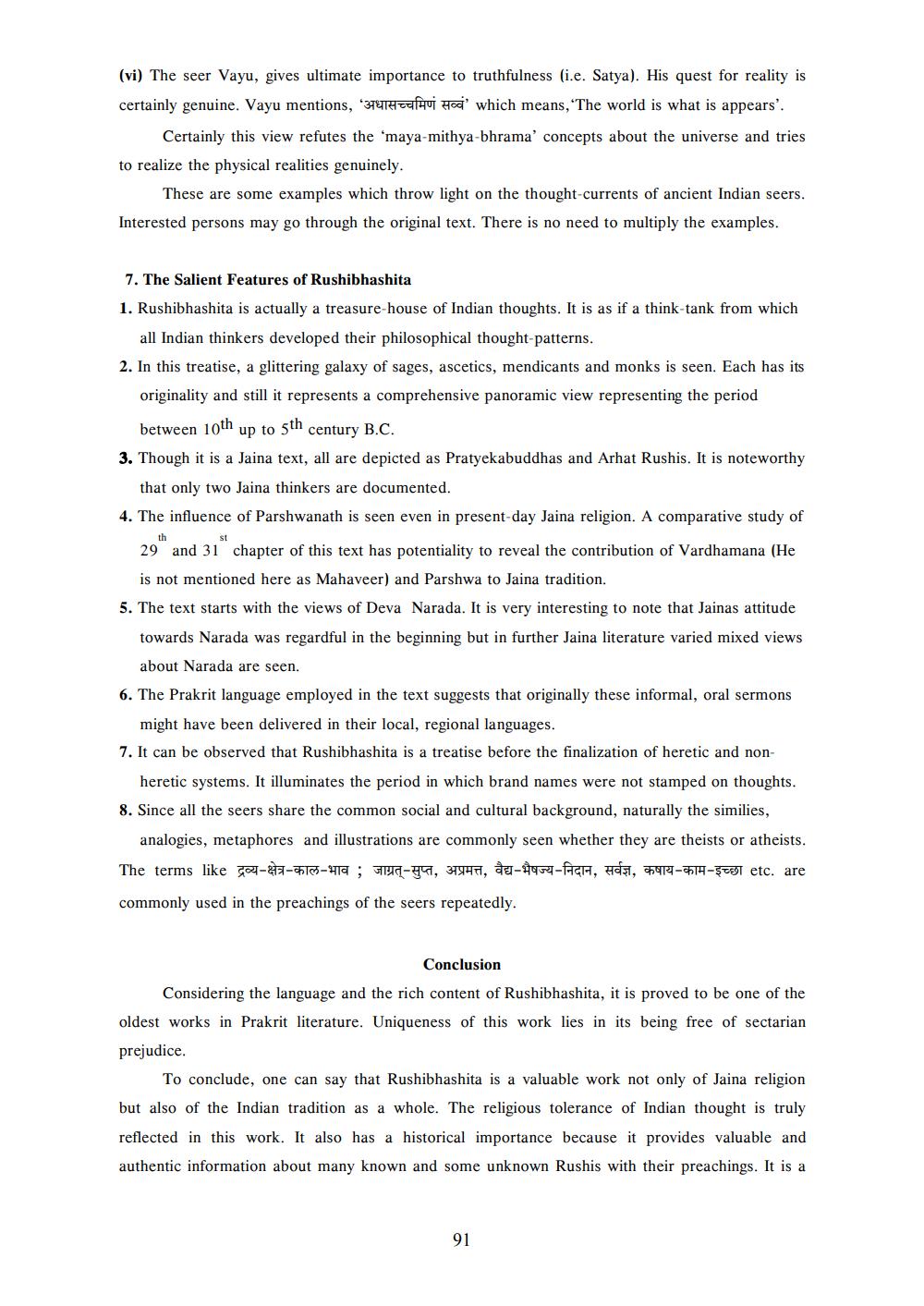________________
(vi) The seer Vayu, gives ultimate importance to truthfulness (i.e. Satya). His quest for reality is certainly genuine. Vayu mentions, '37814 tahui Hoa which means, 'The world is what is appears'.
Certainly this view refutes the 'maya-mithya-bhrama' concepts about the universe and tries to realize the physical realities genuinely.
These are some examples which throw light on the thought-currents of ancient Indian seers. Interested persons may go through the original text. There is no need to multiply the examples.
7. The Salient Features of Rushibhashita 1. Rushibhashita is actually a treasure-house of Indian thoughts. It is as if a think-tank from which
all Indian thinkers developed their philosophical thought-patterns. 2. In this treatise, a glittering galaxy of sages, ascetics, mendicants and monks is seen. Each has its
originality and still it represents a comprehensive panoramic view representing the period
between 10th up to 5th century B.C. 3. Though it is a Jaina text, all are depicted as Pratyekabuddhas and Arhat Rushis. It is noteworthy
that only two Jaina thinkers are documented. 4. The influence of Parshwanath is seen even in present-day Jaina religion. A comparative study of
th
St
29 and 31 chapter of this text has potentiality to reveal the contribution of Vardhamana (He
is not mentioned here as Mahaveer) and Parshwa to Jaina tradition. 5. The text starts with the views of Deva Narada. It is very interesting to note that Jainas attitude
towards Narada was regardful in the beginning but in further Jaina literature varied mixed views
about Narada are seen. 6. The Prakrit language employed in the text suggests that originally these informal, oral sermons
might have been delivered in their local, regional languages. 7. It can be observed that Rushibhashita is a treatise before the finalization of heretic and non
heretic systems. It illuminates the period in which brand names were not stamped on thoughts. 8. Since all the seers share the common social and cultural background, naturally the similies,
analogies, metaphores and illustrations are commonly seen whether they are theists or atheists. The terms like G2-5-0 -41; FUC-447, 349471, E1-4954-FACHH, 4051, 04914-14-5ti etc. are
commonly used in the preachings of the seers repeatedly.
Conclusion Considering the language and the rich content of Rushibhashita, it is proved to be one of the oldest works in Prakrit literature. Uniqueness of this work lies in its being free of sectarian prejudice.
To conclude, one can say that Rushibhashita is a valuable work not only of Jaina religion but also of the Indian tradition as a whole. The religious tolerance of Indian thought is truly reflected in this work. It also has a historical importance because it provides valuable and authentic information about many known and some unknown Rushis with their preachings. It is a
91




